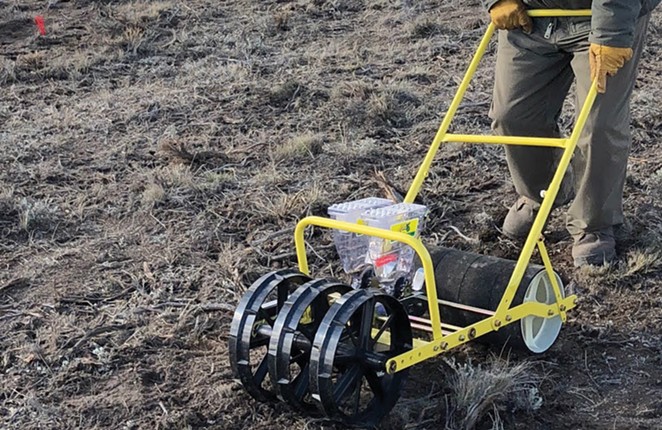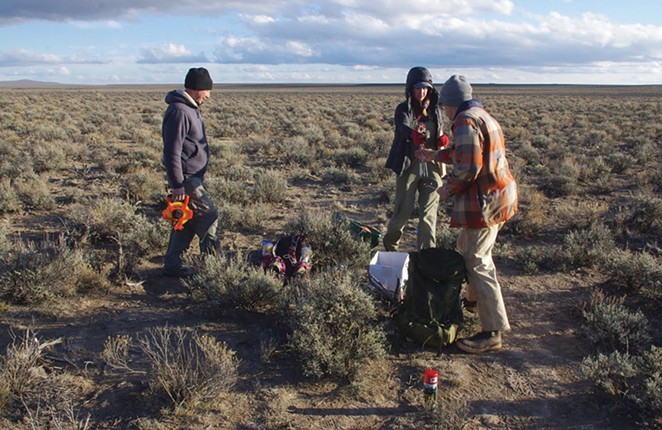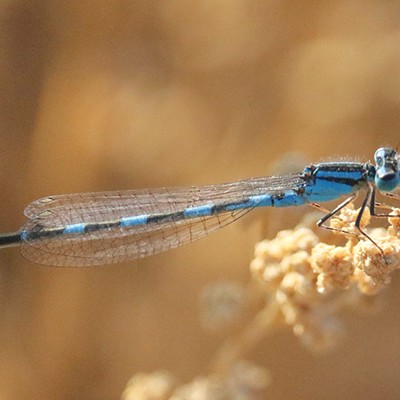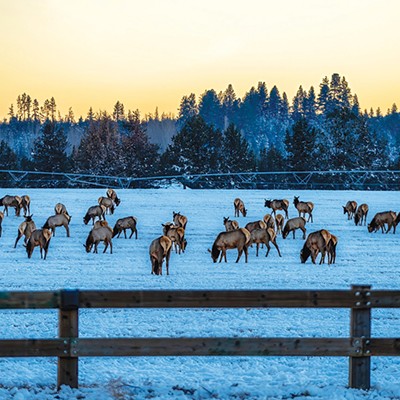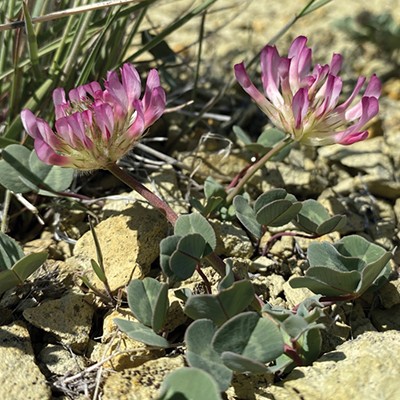Greater sage-grouse are iconic birds of the sagebrush landscape. Their entire life history centers around this habitat type, from nesting sites to food sources, making them a key species across 11 western states and two Canadian provinces. But as icons, this doesn't make them immune from impacts.
Threats to the sage-grouse such as habitat loss, invasive plants, mining, nest predation, wildfires and other aspects have significantly reduced the bird's population across the Intermountain West since the 1960s.
"In the last 50 years, sage-grouse have declined by 80%," said Dr. Stu Garrett, East Cascades Audubon Society member.
Sage-grouse may be best known for the male's elaborate springtime breeding displays at leks (derived from the Swedish word, lekställe, meaning "mating ground"). A lek is generally an open spot in the sagebrush where the males perform a highly choreographed mating display to attract a female. But post-breeding, the survival of the species is quite literally in the clutches of the females, making protection and restoration of breeding and brood-rearing habitats very important to the species' conservation.
"Jim Anderson came to me eight years ago and said, 'Hey, Stu, Audubon needs to get more involved in the sage-grouse issue and would you do that?'" said Garrett. "That's how it all started."
Garrett and other ECAS members formed a group to look at the declining numbers of sage-grouse across their range. "It turns out that there is a period of time in the life cycle of the chicks, the first three to four weeks of their life, where they need very high levels of insects and wildflowers in order to be healthy," added Garrett. Garrett reflected on leks east of Bend out in the sage-steppe habitat that he first visited in the 1970s, which have now gone extinct.
The group and other researchers came up with a reason associated with this decline — the dearth of native bunchgrasses and wildflowers (forbs) growing in the area. After consultations with agency personnel and ecologists at Oregon State University, the group decided to study how to restore the understory of native grasses and forbs.
A rancher near Brothers permitted the group to conduct the study on their ranch property. One thing the group discovered from their untreated study plots was a lack of seeds in the soil — essentially the seed bank is empty because of the lack of grasses and wildflowers, which become established in the early successional stages of the sagebrush-steppe habitat.
The habitat improvement study includes planting seedlings, spreading seeds and testing sowing seeds with a hand-pushed drill. The volunteers also mowed some mature sagebrush patches that lacked any understory plants to test whether the reduced shading impacted seedling survival or seed sprouting.
Garrett listed several takeaways from the project so far:
- Native forb cover in irrigated areas was 150% higher than in unirrigated areas.
- Forb cover in mowed areas was 150% higher than in unmowed areas.
- Forb cover in seeded and mowed areas was 200% higher than in a control area.
Whereas adult sage-grouse survive in the winter feeding solely on sagebrush leaves, the young chicks can't survive on sagebrush until they are several months old. "During those first couple of weeks, the chicks eat insects and dandelion-like flowers such as Oregon sunshine and hawkweed and phlox flowers," said Garrett.
Josh Collins, a retired ecologist with over 50 years in long-range ecological planning, is one of the science team members helping Garrett.
"If you look at the population trends from ODFW's [Oregon Department of Fish and Wildlife] database, which has been carefully curated since the 1960s, and extrapolate out, the suggestion is that the grouse only have several decades left."
Though large-scale restoration projects for sagebrush are underway, say, after a grassland wildfire, to rebuild breeding habitat, it can take 25-75 years for the sagebrush to mature.
"One of the other things to do in the meantime is to improve existing breeding habitat that is missing some of the key elements such as wildflowers that the chicks eat," said Collins. Natural regeneration works where the seeds are present, but in many areas, Nature needs a helping hand to bring back grasses and wildflowers. Restoring tens of thousands of acres of habitat may seem like a daunting task, but this group of ECAS volunteers is confident that it's a positive step in the protection of this iconic species.


